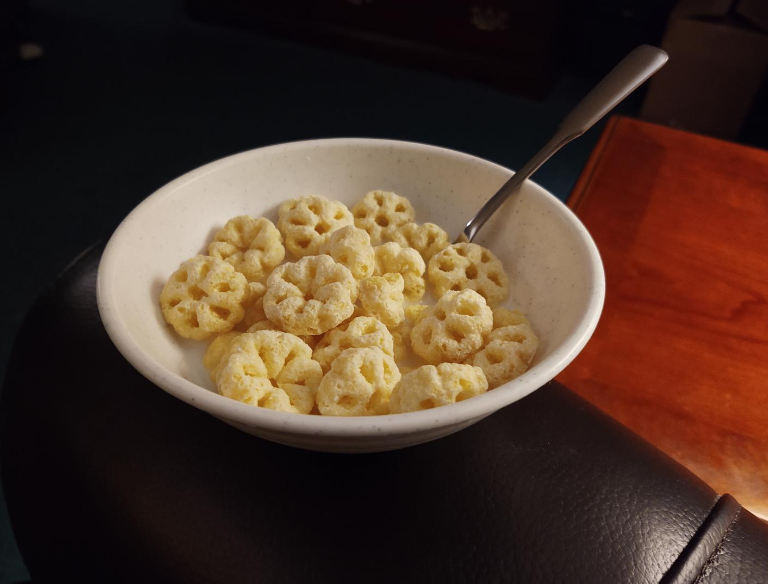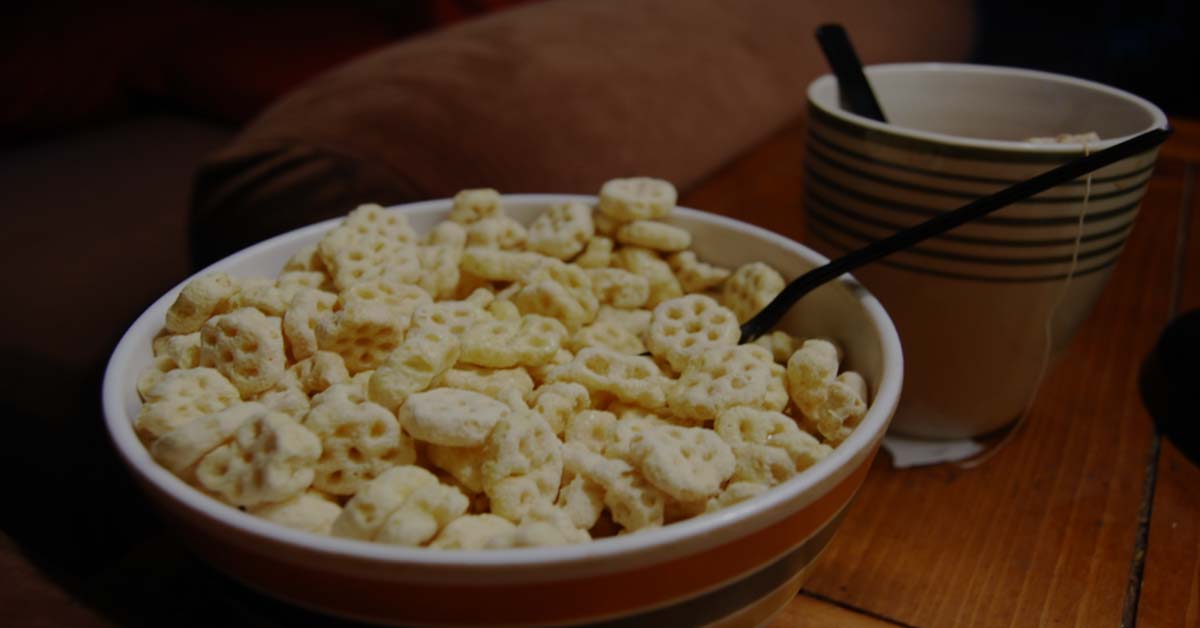This Article is Approved By » Esther Howard (Nutritionist)
When it comes to breakfast cereals, we often seek that perfect balance between taste and health. One such cereal that has delighted families and kids for decades is Honeycomb Cereal.
Those iconic honeycomb-shaped pieces promise a sweet and crunchy start to your day. But is honeycomb cereal good for you?
Let’s dive into the honeycomb and explore its secrets.
Is Honeycomb Cereal Good for You?
Honeycomb Cereal, introduced by Post Holdings in 1965, quickly became a hit with families and young children.
These sweetened corn and oat cereal pieces resemble a big honeycomb shape and can be enjoyed with milk or as cereal snacks on their own.
But is Honeycomb Cereal a healthy breakfast choice?
Honeycomb Cereal can be enjoyed occasionally, but it’s essential to consider it as part of a balanced diet.
While it’s lower in sugar than many cereals, it still contains 10 grams of sugar per serving.
Additionally, it’s low in fiber. If you’re looking for a healthier cereal, explore options with higher fiber content and less added sugar.
Honeycomb Cereal Ingredients and Nutrition Facts
What’s Inside the Honeycomb?
Honeycomb Cereal, introduced by Post Holdings in 1965, combines the goodness of whole grain corn flour, sugar, oat flour, natural honey, and a pinch of salt.
These delightful pieces can be enjoyed with milk or as standalone cereal snacks. Plus, they’re versatile enough to create mouthwatering treats like s’mores bars or trail mix.
The Nutritional Scoop
Let’s break down the numbers. A serving of Honeycomb Cereal (approximately 1.5 cups or 32 grams) offers:
- Calories: 126
- Total Fat: 0.9 grams (only 1% of your daily value)
- Saturated Fat: 0.4 grams (2% of your daily value)
- Trans Fat: 0 grams
- Cholesterol: 0 milligrams (7% of your daily value)
- Sodium: 177 milligrams (1% of your daily value)
- Potassium: 45 milligrams (9% of your daily value)
- Total Carbohydrates: 28 grams (4% of your daily value)
- Dietary Fiber: 1 gram
- Sugars: 10 grams (equivalent to 2 teaspoons)
- Protein: 1.9 grams
- Vitamin A: 15%
- Vitamin C: 0%
- Calcium: 0.3%
- Iron: 15%
Keep in mind that these percentages are based on a 2,000-calorie diet, so individual needs may vary.
Whole Grains and Fiber

Honeycomb Cereal shines in the whole grain department, providing a commendable 19 grams of whole grains per serving. Whole grains are essential for heart health and digestion.
However, the cereal falls short in the fiber department. So, while it’s a good source of whole grains, consider pairing it with fiber-rich foods to meet your daily requirements.
Sugar and Sodium
Honeycomb Cereal’s sweetness comes from 10 grams of sugar per serving. While this is lower than many other cereals, it’s still important to be mindful of added sugars.
As for sodium, the cereal keeps it low, which is a plus for heart health.
Potential Benefits of Honeycomb Cereal
- Source of Energy: Honeycomb cereal provides readily available carbohydrates, which your body converts into energy for daily activities.
- Fortified with Vitamins and Minerals: It’s fortified with essential vitamins and minerals like Vitamin D, Iron, and B vitamins, which contribute to various bodily functions.
- Low in Fat and Cholesterol: Honeycomb cereal is a low-fat and cholesterol-free option, making it suitable for individuals managing heart health concerns.
- May Aid in Digestion: The small amount of fiber in Honeycomb cereal might promote digestive regularity, though it’s not a significant source of fiber.

Drawbacks of Honeycomb Cereal
- High in Sugar: The biggest concern with Honeycomb cereal is its high sugar content. One serving packs 10 grams of sugar, exceeding the recommended daily limit for added sugar (25g for women, 36g for men).
Excessive sugar intake is linked to various health problems, including obesity, diabetes, and heart disease. - Low in Fiber and Protein: Honeycomb cereal lacks fiber and protein, essential nutrients for satiety and sustained energy. It might not keep you feeling full for long, potentially leading to increased calorie intake throughout the day.
- Refined Grains: Honeycomb cereal is made primarily from refined grains, which are stripped of their bran and germ, losing valuable nutrients and fiber.
Making Informed Choices Beyond the Hype
While Honeycomb cereal might hold nostalgic appeal, prioritizing nutrient-dense, whole-food options for breakfast is crucial for long-term health and well-being. Remember:
- Read labels carefully: Understand the sugar content, ingredients, and potential allergens before making a purchase.
- Seek whole-grain alternatives: Opt for cereals made with whole grains, nuts, seeds, and fruits for a more balanced nutritional profile.
- Balance is key: Enjoy occasional treats like Honeycomb cereal in moderation while focusing on healthy breakfast habits most of the time.
- Consult a registered dietitian: For personalized dietary guidance and recommendations based on your individual needs and health goals.
By making informed choices and prioritizing whole foods, you can fuel your body with the nutrients it needs to thrive, leaving the sugary buzz of Honeycomb cereal for a truly occasional indulgence.

Healthy Alternatives of Honeycomb Cereal
- Oatmeal with Fruits & Nuts: A fiber-rich and protein-packed base with natural sweetness from fruits and nuts.
- Whole-Wheat Toast with Avocado & Eggs: Provides whole grains, healthy fats, and protein for a satisfying and nutritious meal.
- Greek Yogurt with Berries & Granola: A good source of protein, probiotics, and antioxidants.
- Scrambled Eggs with Veggies & Whole-Wheat Toast: Offers protein, vitamins, and fiber.
Sugar Showdown: The Sweet Truth
- Added Sugar vs. Natural Sugars: The 10 grams of sugar per serving in Honeycomb cereal are all added sugars, meaning they offer no additional nutritional value beyond sweetness. Compare this to natural sugars found in fruits, which come with fiber, vitamins, and minerals.
- Impact on Blood Sugar: The high sugar content can cause blood sugar spikes and crashes, leading to feelings of fatigue, irritability, and cravings for more sugary foods. This can create a vicious cycle that disrupts healthy eating habits.
- Long-Term Health Risks: Excessive sugar intake is linked to various health problems, including obesity, diabetes, heart disease, and even certain cancers. Choosing lower-sugar breakfast options can significantly reduce these risks.
Sustainability and Environmental Concerns
- GMO Ingredients: Some versions of Honeycomb cereal contain genetically modified organisms (GMOs), which raise ethical and environmental concerns for some consumers. Choosing non-GMO alternatives aligns with the values of responsible sourcing and production.
- Packaging Footprint: Consider the environmental impact of the cereal’s packaging, opting for brands that use recycled materials or offer bulk options to minimize waste.
Disclaimer:
This article is for informational purposes only and does not constitute medical advice. Please consult a registered dietitian or healthcare professional for personalized dietary guidance.
Conclusion
Honeycomb cereal, with its sweet charm and playful shape, has captured the hearts of many breakfast tables.
However, after delving into its nutritional profile, potential drawbacks, and ethical considerations, it’s clear that it’s not the most health-conscious choice.
While an occasional indulgence can be enjoyed, prioritizing nutrient-dense options like whole grains, fruits, vegetables, and lean protein sets the stage for a healthier and more fulfilling breakfast routine.
Remember, breakfast is the foundation for your day, so fuel your body with the good stuff. Opt for options rich in fiber, protein, and essential vitamins and minerals to keep you energized, focused, and feeling your best.
FAQs about Honeycomb Cereal
Is Honeycomb cereal healthy?
While Honeycomb cereal offers some vitamins and minerals through fortification, its high sugar content, lack of fiber and protein, and reliance on refined grains make it unsuitable as a regular part of a healthy diet.
How much sugar is in one serving of Honeycomb cereal?
One serving (32 grams) packs 10 grams of sugar, exceeding the recommended daily limit for added sugar (25g for women, 36g for men).
Is Honeycomb cereal vegan?
Most versions of Honeycomb cereal contain honey, making them unsuitable for vegans. However, some vegan alternatives with similar shapes and textures are available.
Does Honeycomb cereal contain artificial colors or flavors?
Some versions do contain artificial colors and flavors, while others don’t. Check the ingredient list carefully to know what you’re consuming.
Are there any ethical concerns surrounding Honeycomb cereal?
Some versions contain GMO ingredients, and the packaging might not be eco-friendly. Consider these factors when making your choice.

